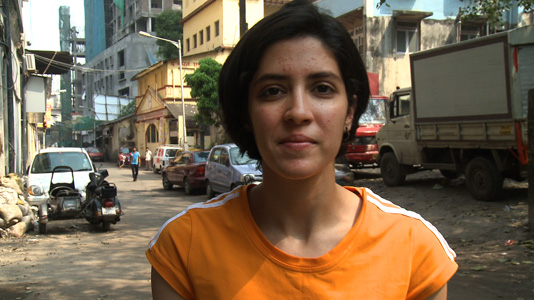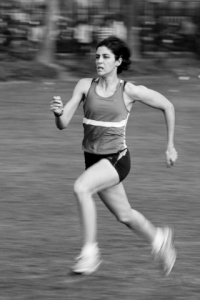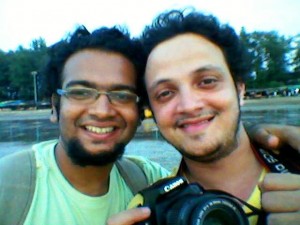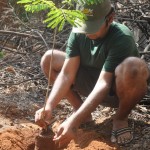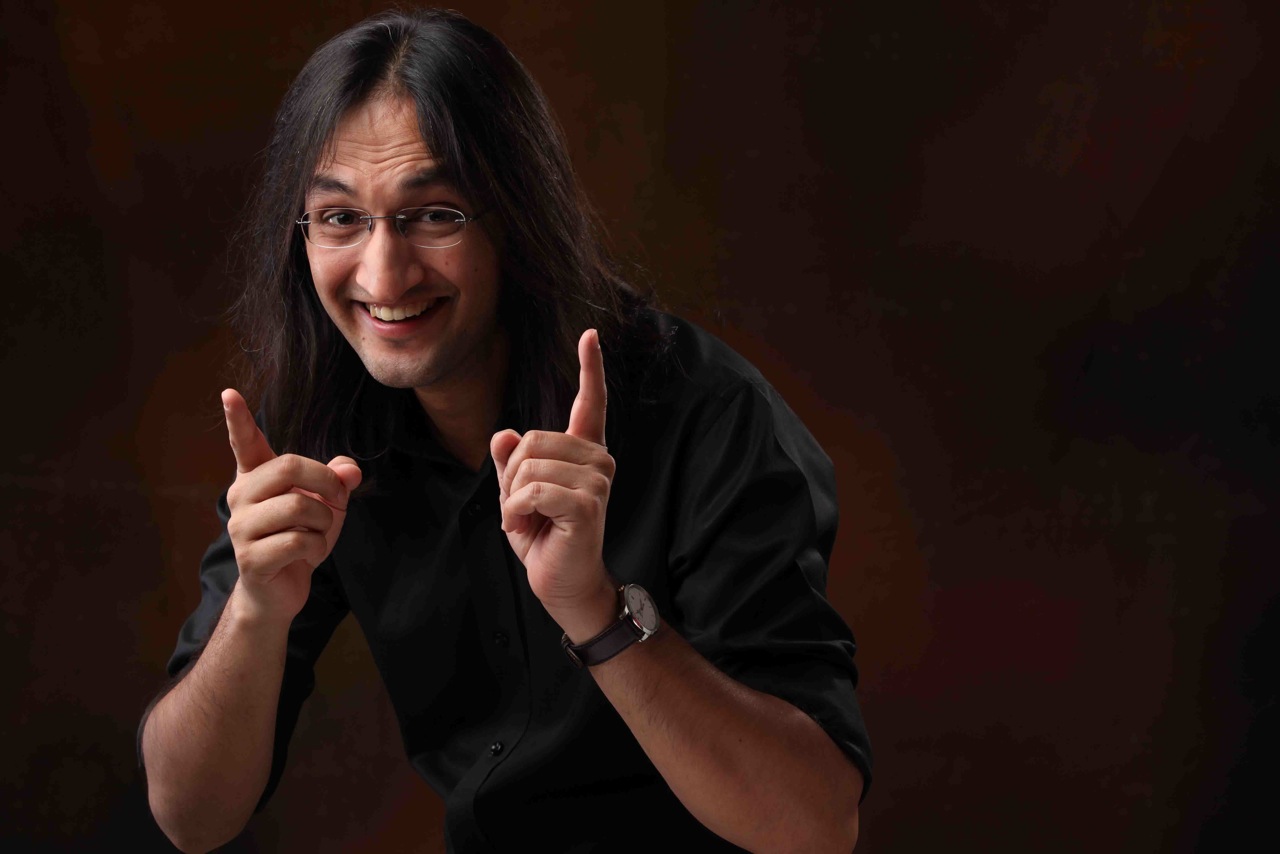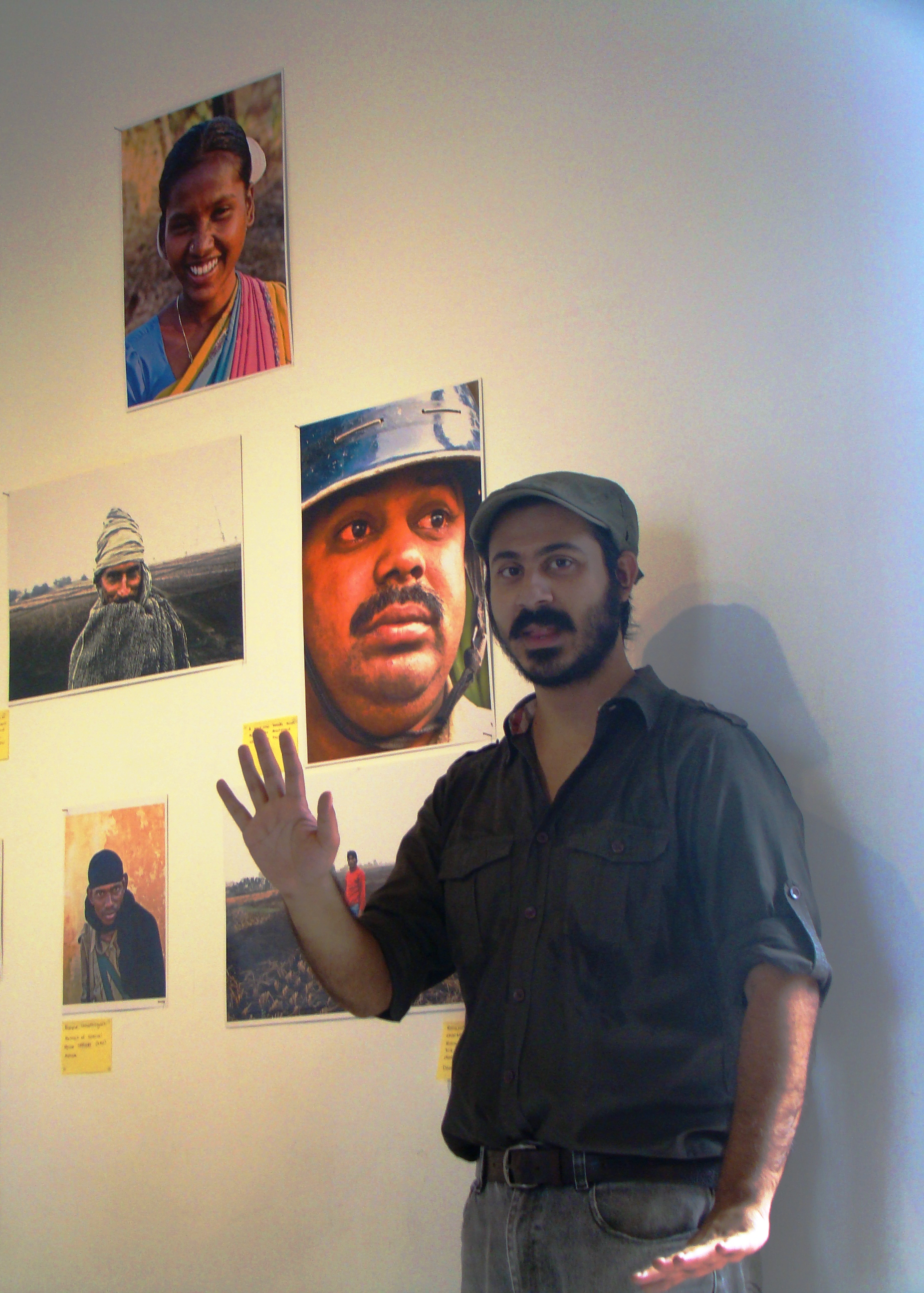Journalist Javed Iqbal talks about the challenges of covering a ravaged people – and why these issues are not extensively covered by the Indian press
by Vrushali Lad/vrushali@themetrognome.in
Javed Iqbal (28) is a Bandra resident, a freelance journalist, an excellent photographer. He is also one of the few journalists in the country covering issues of displacement, dissension and demolition. He used to work as an investigative journalist with The New Indian Express for two years, before taking the freelance photojournalist route. The Metrognome caught up with him at his exhibition of photographs – ‘Ghar’ – that detailed his considerable body of work, encompassing everything from police encounters in Bastar and Dantewada to slum demolitions in Golibar, Mumbai.
You graduated with a degree in Journalism. What did you do right after your graduation?
I, as a young, arrogant, no-good idiot, walked out of an interview with a tabloid. I didn’t want them, and by the fact that I made fun of the newspapers’ gratuitous coverage of a celebrity, they didn’t want me. And then I started working as a freelance photographer, wrote for a music magazine, a lot of other ‘abort missions’ with newspapers, but my heart always lay with the idea of doing things the old-fashioned way – to just go somewhere and work. But the problem was logistics and funding, and it was only a few years later that I realised that the best way of dealing with logistics and funding is to simply do away with it. I finally went with a pocketful of cash and lint.
How did photojournalism happen?
I used to take photos since I was 16, and I knew photojournalism was just around the corner if one simply put themselves on the front row seats of history. And that’s what I did.
You write extensively on (and photograph) issues affecting PAPs, tribals, those facing demolition of their homes, and the lives of villages in the grip of Naxal forces. That’s a road not many journalists take, since development journalism is still a very niche branch in the Indian media. How did you make this choice?
Firstly, I wouldn’t call it ‘development journalism’ when state-based development usually seems to only follow after state repression and its symptoms, human rights violations. Look at what’s happening in Koodankulam today. Old women and folk are being teargassed because they’re the only ones who’re raising the very serious issue of nuclear safety and while the whole world is shutting down their nuclear power plants, we got hundreds of excuses and lies to justify them, and thus the repression on the local populace.
And for me, the choice to cover issues like this was easy – when I started, there were less than a handful (of journalists) working on these issues. Koodankulam today has a very young talented photographer and a lot of decent writers. But coming back to central India, there were journalists like Ajit Sahi of Tehelka who’d come and go, and of course, there was P Sainath, whose work is as admirable as it could be, and I remember writing to him when I wanted to work in Dantewada but he himself barely touched the insurgency, the civil war in Bastar that really started in 2005, and his one warning does still ring true: ‘All work that challenges the status quo carries risks.’
Yet the choice I made, way back in 2009 in Dantewada is a principle I still follow – cover issues no one else is willing to touch. And my future editor Aditya Sinha, then in The New Indian Express gave me some valid advice: that if one newspaper starts (to report something), others follow. And that has been something I have noticed over the years.
Have you ever directly experienced any of the famed police atrocities that are written about so much?
I have experienced them (beatings, threats). But then you just keep doing your job. I honestly don’t feel it merits a description as it’s ancient history.
What has been the most heart-breaking incident that you have been witness to?
There have been too many. But there have even been many moments of joy. And the things that cause you joy, then face state repression or Maoist violence. And that really hurts. But recently, I was at Dhanbad at the Chasnala coal mine, where in 1975, some 380 miners drowned within seconds. It was something that happened when I wasn’t even born, and looking at the names on the memorial fading, the pieces of coal all around me, I just, I picked some coal up and kept it with me, remembering that 380 people died for these rocks, for ‘development’ to some, for ‘exploitation’ to others. And I just 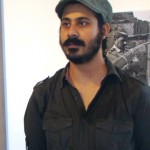 couldn’t forget it.
couldn’t forget it.
There is a box at home with these kinds of things, a photograph of a working class dalit musician who died of a heart attack, a map drawn of how a police firing took place at Ramabai Nagar by someone who lived it, a passport-sized photo of a young adivasi murdered by the police, gifted to me by his father, a lump of coal.
Which issue is closest to your heart?
Everything is connected. There are no hierarchies. Just difficult choices on where to travel when.
How did you get involved with the housing and displacement issue in Mumbai? What kind of research and on-field engagement goes into covering it?
Once I started coming home, I realised there was a lot happening in Mumbai – and I started with drawing parallels to ‘development’ with Ward M/Chembur East that has development indicators that are worst than some places in central India. And I knew someone in the housing movement and he told me about a place that was very close to home: Golibar.
And thus, every time I came back from central India, I found myself covering demolition drives there.
Have you worked with activists (such as Simpreet Singh in Mumbai) who work extensively against slum demolitions and displacement without rehabilitation?
Simpreet was the one who told me. The one I asked.
Which journalists and photographers have you had the chance to work with on your travels? What has the learning experience been like with each of them?
Many. There is a very long list. I am one of those guys who, thanks to the ethic of my editor, doesn’t give a hoot about getting the story first, so thus competition is something I did not give a f*** about. So I have always worked with whoever is in the area, or anyone who calls. In central India, you name the usual suspects, Aman Sethi of The Hindu, Tusha Mittal and Tarun Sehrawat of Tehelka, and I have worked with them.
Give us an example that illustrates the statement: ‘The law is an ass’. I’m sure you’ve encountered this several times in your work.
(Laughs) I have never heard that, but the sentiment it illustrates is true to only certain points. While there has been some movement by the judiciary towards judicial activism that has brought some moments of calm to the affected, the overall behaviour of the state has also found ways to subvert the judiciary itself. Mining in Goa takes place irrespective of orders by the Supreme Court, suspects are not brought before magistrates within 24 hours, the police doesn’t arrest builders who the High Courts have asked them to investigate, workers who won a court order to be regularised by ACC Holcim in Chhattisgarh are not being regularised, a CBI team sent to investigate an attack in Dantewada is attacked by Special Police Officers, and of course, while the Supreme Court bans the use of SPOs, they’re still there.
The law is not an ass. The law is made to look like an ass.
It is not always easy interacting with, and later coming to terms with, the problems and the lifestyles of slum dwellers. What was your experience the first time you decided to investigate or document slum demolitions?
Honestly, I’ve never had problems interacting or coming to terms with the ‘lifestyles’ of slumdwellers. But slums themselves are not some homogenous mass, there are class distinctions, caste distinctions within all of them. Some slums are self-developed to the point that I have known upper-middle class funnies, considering renting a room there. Some, such as those built on the Deonar dumping grounds, are a universe of their own, a world upside down.
During a demolition drive, it can be difficult, but I’ve always managed to get across to both the police and the people. And I am now at that point, where I am euphoric if a demolition drive is cancelled.
How would you rate the performance of the police and the security forces in areas like Jharkhand and Chhatisgarh?
If we had a reality TV show on which is the most violent, corrupt police force in the country, I think it would be a very hard choice to make. But it would be the most-watched TV show in the country because everyone across the country has faced it somehow or the other.
There is even an infamous quote by Justice A N Mulla, that he was forced to expunge later: ‘I say it with all sense of responsibility that there is not a single lawless group in the whole country whose record of crime is anywhere near the record of that organised unit which is known as the Indian Police Force.’
And decades after he said that, a woman may get stones shoved up her vagina in Dantewada, but in Mumbai a watchman would get a packet of chillies shoved into his anus. In the past, a police station in Kerela had a history of committing sodomy.
Have you worked in Naxal-affected areas in Maharashtra?
I worked in Gadchiroli. I was there in 2010. It’s very different from its neighbouring districts, but the police operations and the daily repression of the police, Maoist ambushes of police, are still commonplace there.
Let’s talk about your exhibition of photographs, ‘Ghar’ (held in September 2012). How long did it take to compile all the pictures and set up the showing? What did you hope to achieve by having such an exhibition?
‘Ghar’ is just a work in progress as long as I keep working in dispossession, displacement and ‘development’ as you call it, and there have been photographs in the set from 2008 till 2012. And honestly, I don’t think I set out to achieve anything on the exhibition. I like working in the field, and for the last month, I really have missed it.
Have you held such exhibitions earlier?
This would be the first exhibition which I have attended. Usually, my photos are put up in public spaces or in working class neighbourhoods by the people who I took pictures of, themselves. Once, some people got together and had an open show at Carter Road, and a friend sent me a video of the responses of street children to the photographs of the killing of adivasis in central India. One child asked, “Wherever people are poor, do the police do this?”
What do your parents do? What are their feelings about your chosen line of work?
(Laughs) Father was in the IAS and is a great believer in the McMohan scheme of things. While he is ambivalent to know that my work challenges his idea and order of the world, and it’s really easy to beat him with logic, statistics, and the simple truth, the dinner table has become a lovely, more dramatic space. Mother is not surprised by what I document, she sometimes adds to it, with stories from the past.
But they are supportive. Even though, they, like all parents, are a bit circumspect when I get into trouble.
How did you start writing in newspapers?
I’m actually a writer. Photography is the second skill. Which makes me laugh about this whole interview. I started writing the same time I started taking pictures. Pictures told the story and the story was told by the pictures. I worked for the New Indian Express as a reporter when Operation Green Hunt, the second phase of the insurgency, was in full phase. Then when my editor quit in 2011, I quit. Since then, I’ve written for DNA, Tehelka, Al Jazeera, Infochange, Sunday Guardian, etc.
What are your thoughts on the alleged ‘disconnect’ that mass media has with issues that affect development, if such a disconnect exists, in the first place?
There is a gigantic disconnect. And to simplify, before we start talking about censorship of the press, advertising and corporate control over editorial, or editors who’re not supportive, we first need to challenge self-censorship itself. Most journalists don’t write, don’t report, because they themselves don’t give a shit.
Lastly what are you working on at the moment?
I’m working on a few stories, and a plan on getting back to reporting in Jharkhand or Orissa. As I told you, the hardest choice is to choose your tatkal ticket.
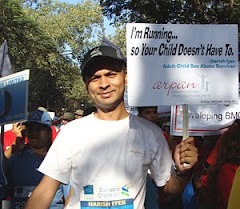 Harish started the project in February this year, and the idea for it was probably germinating even as he started the Sita Sena in 2009 as a counter point to fundamentalist group Ram Sene’s Valentine’s Day exploits in Bangalore. “We were a group of men wearing the most obscene pair of shorts we could find, and each of us carried a whistle. Then we approached women on the street, and told them they could blow the whistle at any man in the group,” he says, adding that the blog and the project is a chance for him to present his views, which may not be the world view. “People have lost their rational thinking. Either they speak loudly in front of 10 people who share their opinion, or they act cool by not listening to other voices. There has to be a middle path.”
Harish started the project in February this year, and the idea for it was probably germinating even as he started the Sita Sena in 2009 as a counter point to fundamentalist group Ram Sene’s Valentine’s Day exploits in Bangalore. “We were a group of men wearing the most obscene pair of shorts we could find, and each of us carried a whistle. Then we approached women on the street, and told them they could blow the whistle at any man in the group,” he says, adding that the blog and the project is a chance for him to present his views, which may not be the world view. “People have lost their rational thinking. Either they speak loudly in front of 10 people who share their opinion, or they act cool by not listening to other voices. There has to be a middle path.”
